Hyperlipidemia is a condition of abnormally elevated levels of any or all lipids and/or lipoproteins in the blood. It may be due to genetic causes such as a mutation in a receptor protein (primary hyperlipidemia) or due to other underlying causes such as diabetes (secondary hyperlipidemia). Based on the type of elevated lipids, it can also be classified into hypercholesterolemia, triglyceridemia, etc.
Like the parent compounds, curcuminoids, Tetrahydorcurcuminoids (THCs) have shown antihyperlipidemic effects in experimental diabetic rats. Administration of the THCs reduced the serum levels of total lipids, low-density lipoprotein (LDL)-cholesterol, very-low-density lipoprotein (VLDL)-cholesterol and at same time increased the levels of high-density lipoprotein (HDL)-cholesterol in diabetic rats. The levels of HMG-CoA reductase, cholesterol, triglycerides, free fatty acids and phospholipids significantly decreased to normal levels in THCs-treated animals (Pari and Murugan, 2007b).
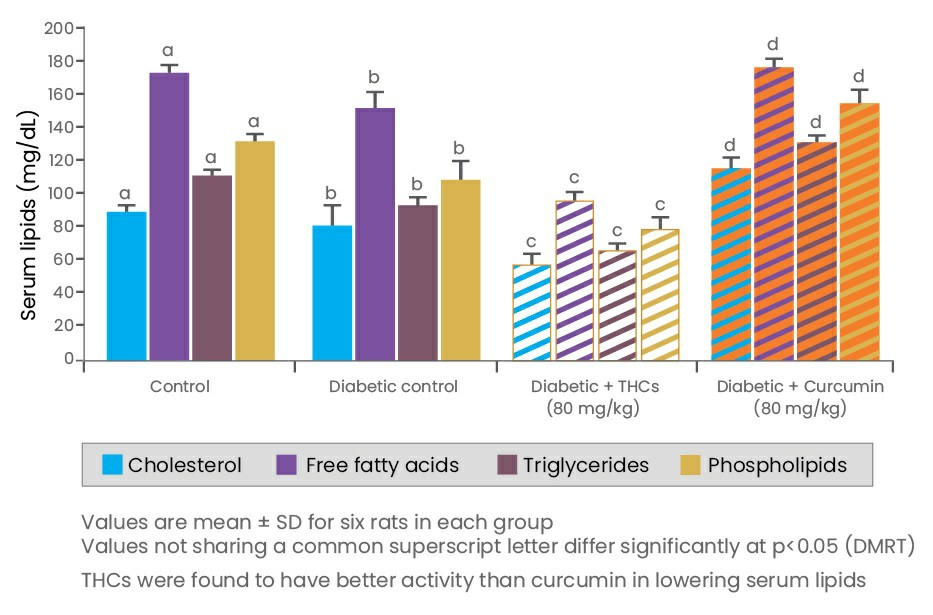
(Adapted from Pari and Murugan, 2007)
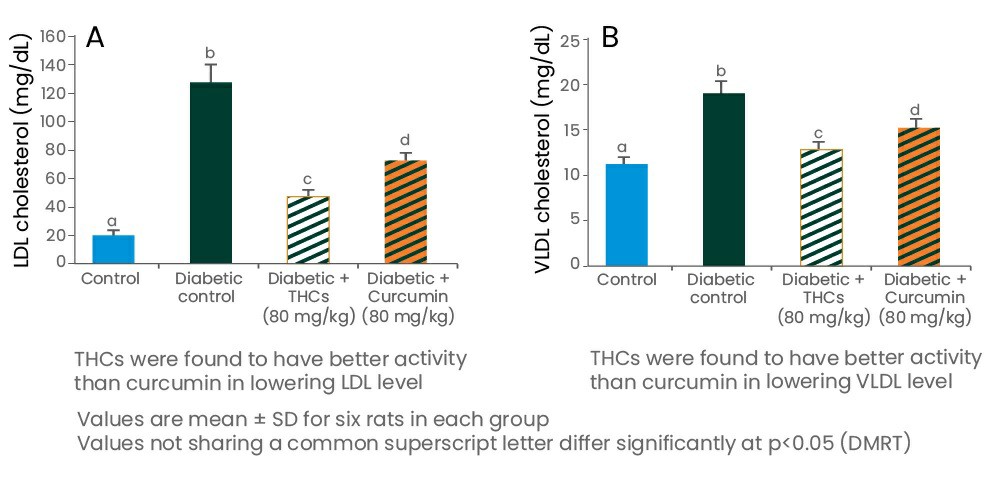
(B) Influence of THCs and curcumin on VLDL cholesterol levels in control and experimental rats
(Adapted from Pari and Murugan, 2007)
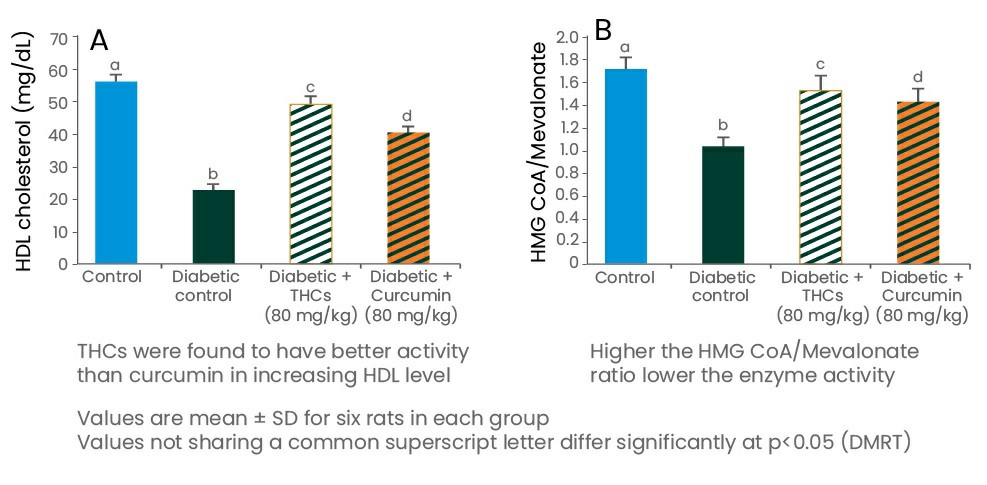
(B) Influence of THCs and curcumin on HMG CoA/Mevalonate ratio level in control and experimental rats
(Adapted from Pari and Murugan, 2007)
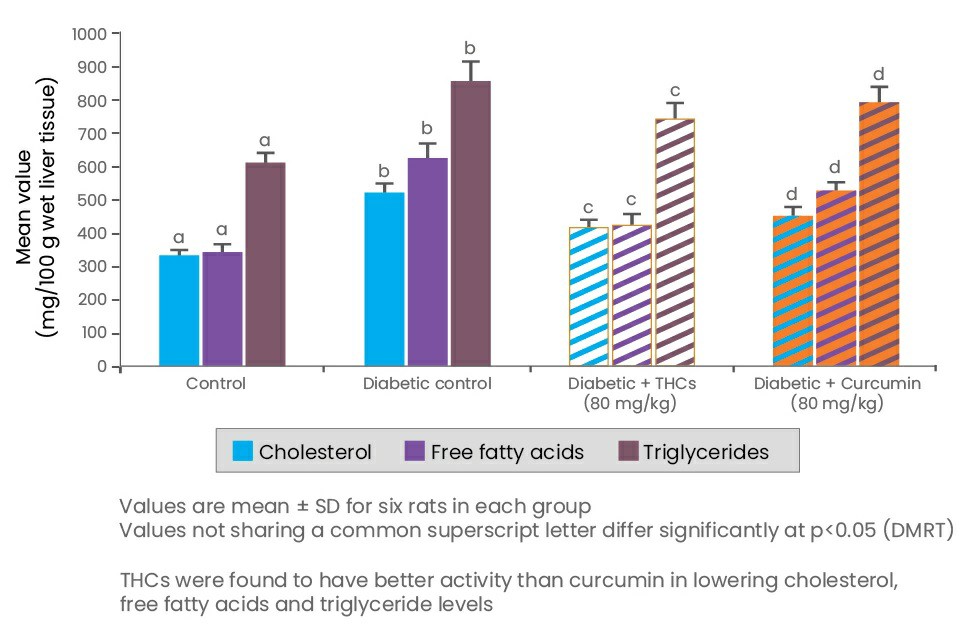
(Adapted from Pari and Murugan, 2007)
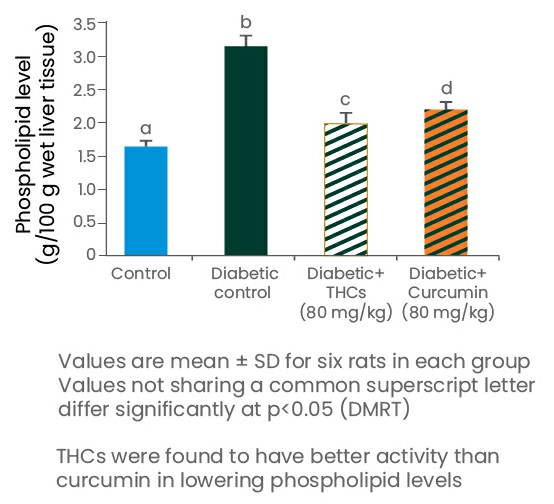
(Adapted from Pari and Murugan, 2007)
Antihyperlipidemic effect of curcumin and THC in experimental type 2 diabetic rats
The present study examines the effect of curcumin and THC on serum and liver lipids and lipid-metabolizing enzyme in rats with streptozotocin (STZ) and nicotinamide-induced diabetes. Oral administration of THC and curcumin at 80 mg/kg body weight each for a period of 45 days showed significant reduction in blood glucose and a significant increase in plasma insulin in diabetic rats, which proved that THC possess an antidiabetic effect. Further, a significant reduction in serum and liver cholesterol, triglycerides, free fatty acids, phospholipids, HMG-CoA reductase activity, very-low-density lipoprotein (VLDL) and low-density lipoprotein (LDL) cholesterol levels were observed. THC and curcumin significantly reduce the levels of serum and liver lipids, which were significantly raised in STZ and nicotinamide diabetes rats. These results also conclude that antidiabetic and antihyperlipidemic effects of THC are more efficient than that of curcumin at same dose level (Pari and Murugan, 2007).
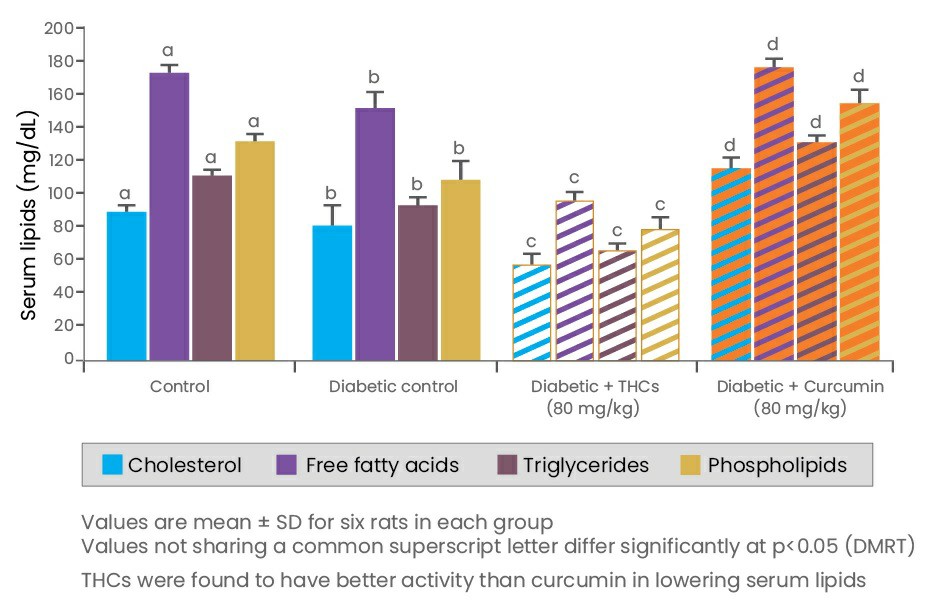
(Adapted from Pari and Murugan, 2007a)
Pathological changes of the liver such as inflammatory infiltration filling over the sinusoidal vacuolation of hepatocytic nuclei and portal triad with mild inflammation and cell infiltration were reduced in rats treated with THCs (Pari and Amali, 2005).
In another study, Muthumani and Miltonprabu (2015) investigated the hepatoprotective effect of THCs over arsenic (a potent hepatotoxin)-induced toxicity in rat liver. Hepatotoxicity was measured by the increased activities of serum hepato-specific enzymes, namely ALT, ALP, AST and bilirubin along with increased elevation of lipid peroxidative markers, TBARS. The results indicated that THCs reduced the levels of liver enzymes including transaminases, ALP, LDH and bilirubin in rats. Treatment with THCs also reduced the oxidative stress, dyslipidemia, mitochondrial damage and improved mitochondrial structure and function in arsenic exposed rat liver.
Antihyperlipidemic effect of chlorogenic acid (CGA) and Tetrahydrocurcumin (THC) in rats subjected to diabetogenic agents
This study was carried out to evaluate the effects of THC and CGA alone and in combination on alterations in lipids, lipoproteins and enzymes involved in lipid metabolism in streptozotocin (STZ)–nicotinamide-induced type 2 diabetic rats. It was observed that the adult male albino wistar rats when administered with STZ exhibited a significant (p<0.05) increase in concentrations of plasma and tissue lipids, low density and very low-density lipoproteins (LDL and VLDL), and a decrease in the concentration of high-density lipoproteins (HDL). Administration of CGA (5 mg/kg body weight) in combination with THC (80 mg/kg body weight) for 45 days remarkably reduced the STZ-induced changes in lipids, lipoproteins and lipid metabolizing enzymes when compared to the effects of CGA or THC alone in diabetic rats. The study results conclude that combined effect of THC and CGA can potentially ameliorate lipid abnormalities in experimental type 2 diabetes rats (Karthikesan et al., 2010).
The THC prevents brain lipid peroxidation in STZ-induced diabetic rats
The study was conducted to investigate effect of THC on the occurrence of oxidative stress in the brain of rats during diabetes, extent of oxidative damage, and status of the antioxidant defense system. A total of 24 rats (18 diabetic surviving rats and 6 normal rats) were considered for the study. The diabetic rats orally administered with THC (80 mg/kg of body weight) for 45 days showed a significant reduction in blood glucose and significant increase in plasma insulin levels. It was observed that administration of THC increased the glutathione (GSH) content which protected the cellular proteins against oxidation through glutathione redox cycle and also directly detoxifies reactive oxygen species generated from exposure to STZ. These results conclude that THC possesses antioxidant effects that may contribute to its protective action against lipid peroxidation and enhancement of cellular antioxidant defense (Pari and Murugan, 2007).
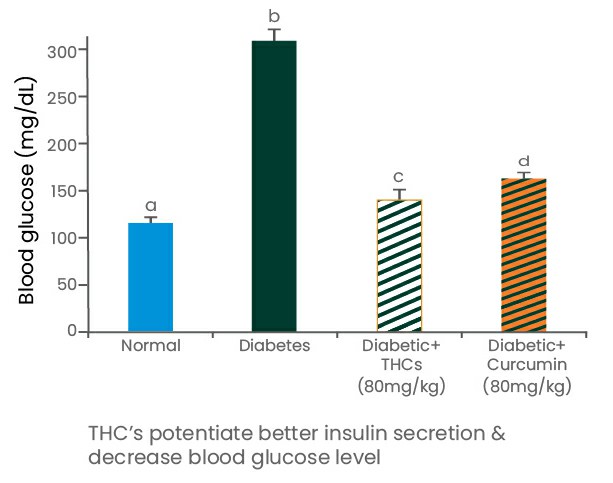
experimental rats
(Adapted from Murugan et al., 2008)
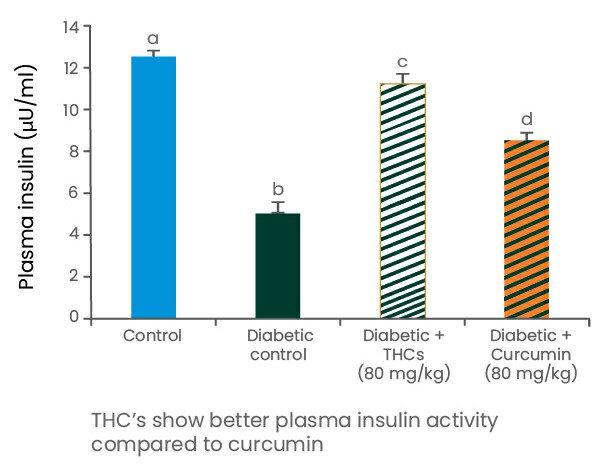
experimental rats
(Adapted from Murugan et al., 2008)
